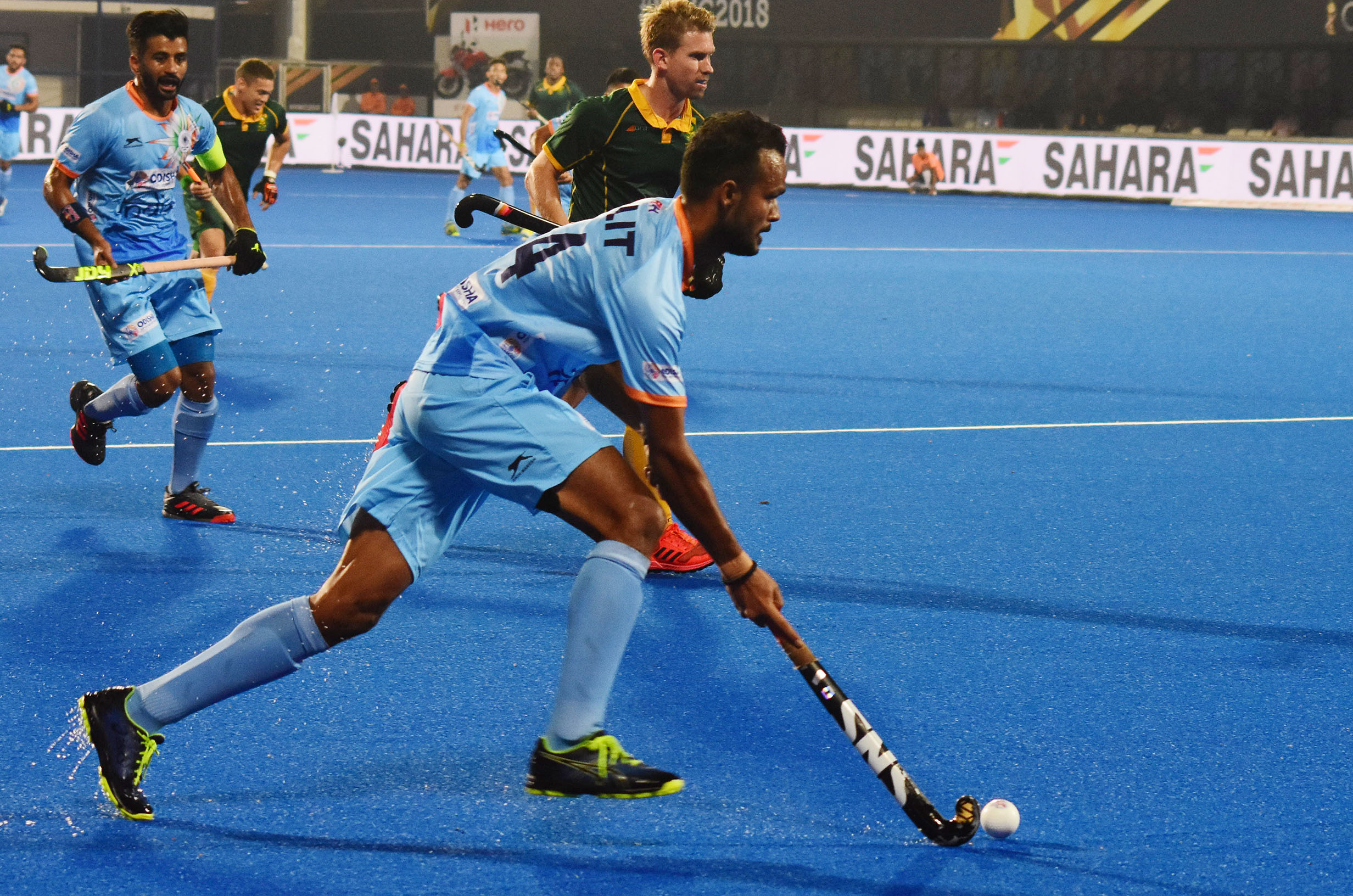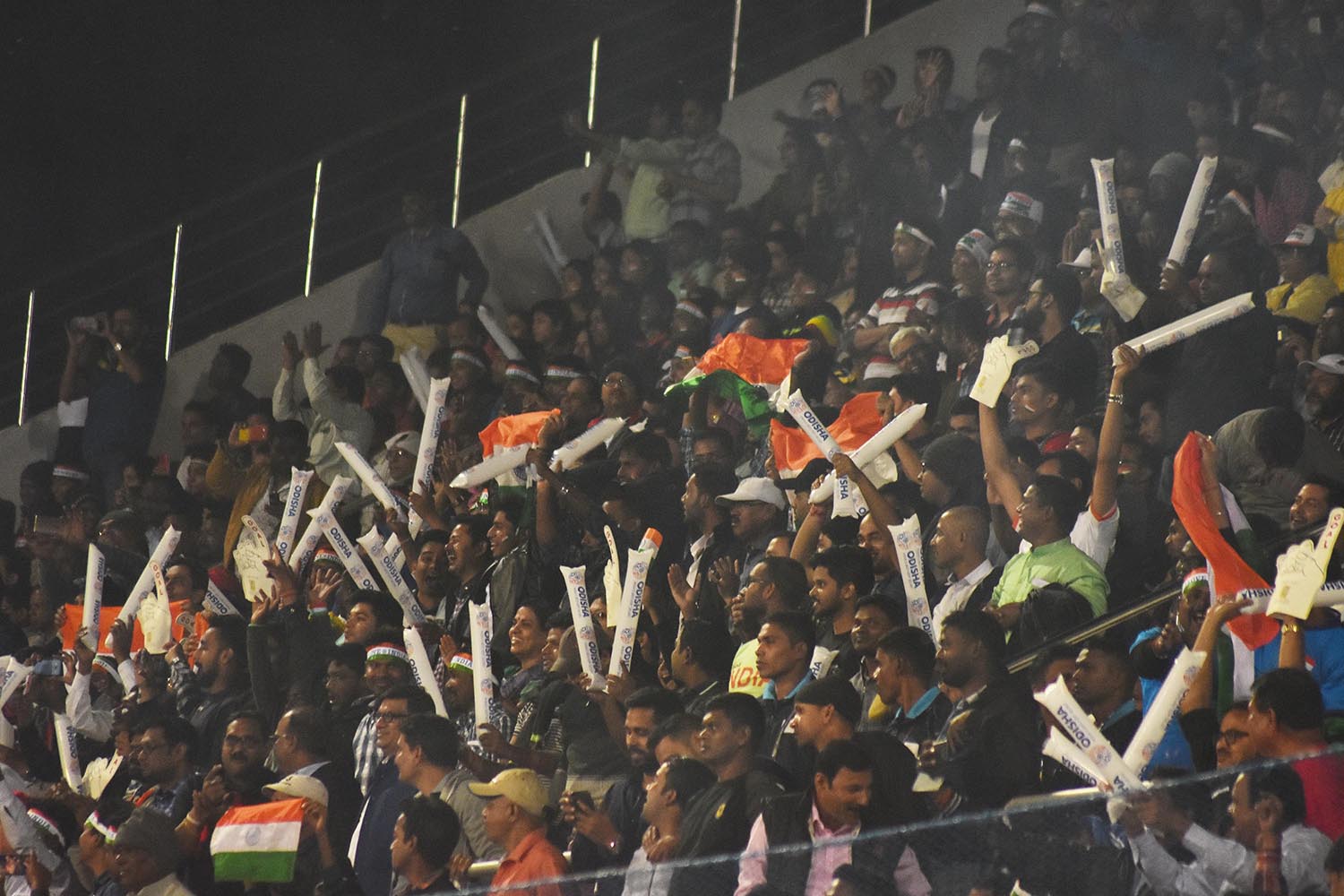India coach Harendra Singh calls the 15,000 full-throated support for his team his 12th player. In that case it will be 12 vs 12 when his team faces three-time champions Netherlands in the World Cup quarterfinals at the Kalinga stadium in Bhubaneswar on Thursday.
That’s going by Dutch captain Billy Bakker’s revelation that team feeds off the energy of the crowd and if their 5-0 demolition of Canada in their cross-over match is any indication, Harendra’s advantage could well turn to deuce.
If the Netherlands disregard the partisan support that India will receive on Thursday, they do the same for any psychological advantage history may bring in their favour.
(Key forward for India, Lalit Upadhyay)
The Dutch have beaten India all six occasions the two nations have met in the World Cup but coach Max Caldas shrugged away the factoid, saying that the past does not matter.
What does matter is that either team is bubbling with consummate skill and the encounter with a semifinal place at stake is likely to be a celebration of attacking flair.
But if India assume it’s another version of a marquee match with arch rivals Pakistan, they’ve got another thing coming.
The Dutch, ahead of a young Indian side by experience, will deny the hosts the sort of space that arises from playing the game from the heart as Indo-Pak encounters turn out to be.
If there’s any advantage – besides the crowd support – that India will enjoy, it’s the additional two days of rest that they earned after topping pool C ahead of Belgium who were forced into the cross-over match against Pakistan which they won 5-0.
India, ranked fifth, began their campaign with a 5-0 win over South Africa before drawing a taut match against third ranked Belgium 2-2.
The hosts then beat Canada 5-1 after the score read 1-1 at the end of the third quarter.
The Netherlands, ranked fourth, started off with a 7-0 rout of Malaysia before suffering a 1-4 loss to European rivals Germany in their second match. A 5-1 win over Pakistan brought their campaign back on track.
The Dutch circle entries make for awesome reading – 136 in four matches. It has led to 67 shots, 18 of which have ended in the net.
So much so that their uncharacteristic failing at penalty corners (7 from 25) did not perturb Bakker who pointed to the number circle entries.
India have had 80 circle entries emanating in 20 shots and 12 goals. A success of four goals from 13 penalty corners amounts to more or less the same ratio that the Dutch have registered.
The Dutch penetration, however, is something that the Indian defence will be hard pressed to contain.
With their nifty inter-play marked by breathtaking touches to crack open the most stubborn of defences, one wagers Harmanpreet Singh, Varun Kumar, Surender Kumar, Amit Rohidas and Birendra Lakra with goalkeeper Sreejesh are going to have a busy night.
Except for the fourth quarter against Germany when they fell apart in deep defence, the Dutch have looked solid at the back.
India on their part, have shown staying power to rival the best and their propensity to attack is going to test the resolve of Bakker and his men.
The forward to impress has been Lalit Upadhyay even as Akashdeep Singh and Mandeep Singh have yet to reach peak performance in the competition.
Kangujam Chinglensena has been exemplary in the midfield where the battle is likely to be won and lost.
If the Dutch attacks have to be broken down, vice-captain Chinglensana will need every support he can from captain Manpreet Singh who hasn’t exactly been in sparkling form thus far.
The fluid formation of the Dutch often sees star forward, the Argentine-born Valentin Verga, defend one moment and find the boards at the other end the next. Along with Mirco Pruijser, he is going to be the Netherlands’ best bet for goals from open play.
Jeroen Hertzberger, Thierry Brinkman and Robbert Kemperman are ever keen to join the party. Bob de Voogd and Sander Baart have added to a tide of orange that has led to such bright statistics that makes amends for Mink van der Weerden’s failure to find the net from penalty corners with customary frequency.
Much of the creative fizz produced by the Dutch stems from the adeptness of the basics – trapping, accurate passing and positional play that warrants rival defenders have eyes at the back of their heads.
That extends to the use of the aerial ball which, in Bhubaneswar, has often been seen as a tactic to turn defence to attack while taking the pressure off the defence.
Last but not least, the X-factor lies in the sharpness in front of goal and chances are likely to fall in spates. With both Sreejesh and his opposite number Pirmin Blaak providing a resolute last line of defence, the team that makes good of opportunities more than the other is likely to play the winner of Australia and France in the medal round.
Photos: Siddharth Mittal




